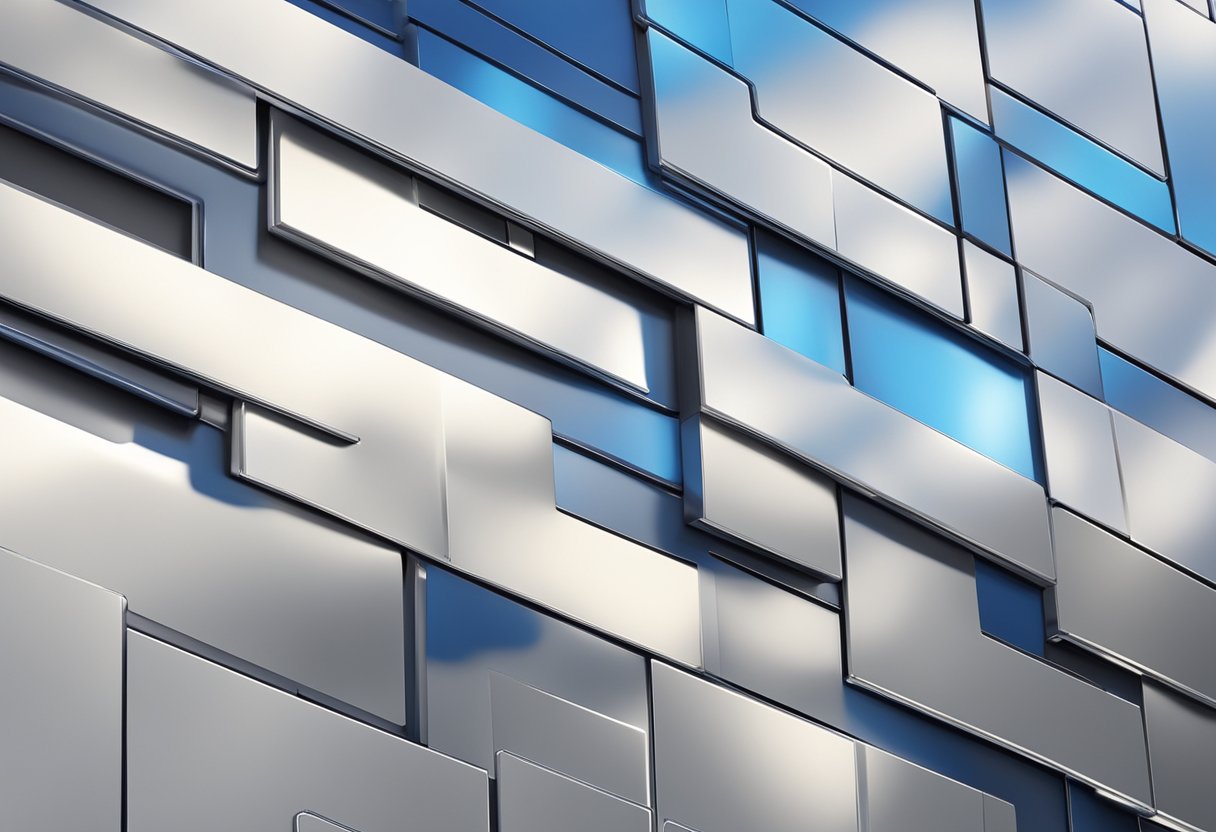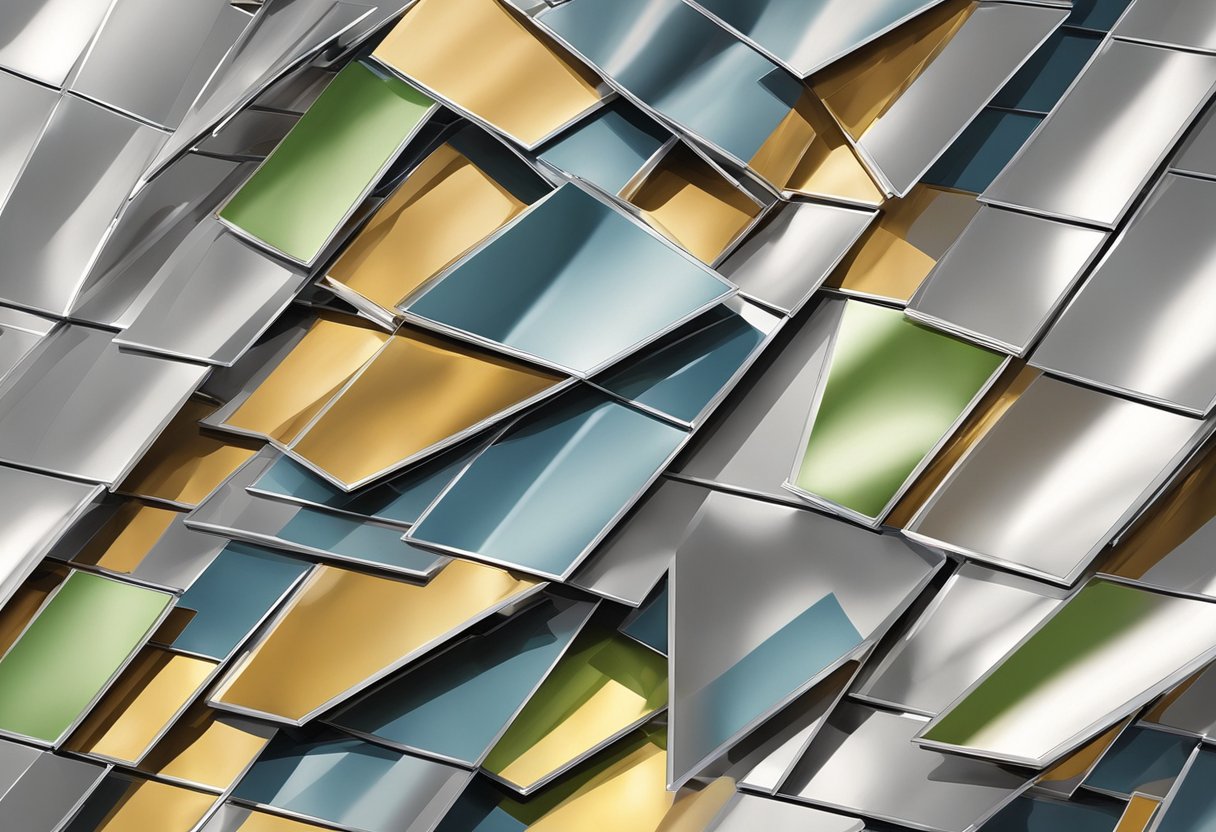Aluminum composite wall panels is a type of cladding material that is commonly used in modern construction. It consists of two aluminum sheets bonded to a non-aluminum core, typically made of polyethylene. The result is a lightweight, durable, and versatile material that can be used for a variety of applications.

One of the main advantages of aluminum composite wall panel is its versatility. It can be used for both interior and exterior applications, and is suitable for a wide range of building types, from residential homes to commercial buildings. It is also available in a variety of colors and finishes, allowing architects and designers to create unique and visually appealing facades.
Another advantage of aluminum composite wall panel is its durability. It is resistant to weathering, corrosion, and UV radiation, which makes it ideal for use in harsh environments. It is also easy to maintain and clean, which helps to extend its lifespan. Overall, aluminum composite wall panel is a high-quality, cost-effective, and sustainable cladding material that is well-suited for modern construction projects.
Composition of Aluminum Composite Panels

Aluminum composite panels (ACPs) consist of two thin aluminum sheets bonded to a non-aluminum core, which is typically made of polyethylene or fire-resistant mineral-filled core. The aluminum sheets are coated with a high-quality paint or a PVDF coating that provides excellent weather resistance, durability, and color retention.
The core material of ACPs plays a crucial role in determining their fire resistance and other properties. The polyethylene core is less expensive and lighter than the mineral-filled core, but it is more flammable and can release toxic fumes when burned. Therefore, ACPs with polyethylene cores are not recommended for use in high-rise buildings or other structures where fire safety is a concern.
On the other hand, ACPs with fire-resistant mineral-filled cores are more expensive and heavier than those with polyethylene cores, but they offer superior fire resistance, thermal insulation, and sound insulation. They are also more resistant to impact, moisture, and chemical corrosion.
The thickness of the aluminum sheets and the core material can vary depending on the application and the desired performance characteristics. ACPs are available in a wide range of colors, finishes, and textures, which can be customized to meet the specific design requirements of architects, builders, and designers.
Overall, ACPs offer an excellent combination of form and function, making them a popular choice for both interior and exterior cladding, signage, and other architectural applications.
Advantages of Aluminum Composite Wall Panels

Durability
Aluminum composite wall panels are known for their durability and strength. They are made of two aluminum sheets bonded to a non-aluminum core, which makes them resistant to impact, weather, and corrosion. They are also fire-resistant and have a long lifespan, making them a cost-effective choice for building exteriors.
Aesthetics
Aluminum composite wall panels are available in a wide range of colors, finishes, and textures, making them a versatile choice for architects and designers. They can be customized to match the design of any building, from modern to traditional. They are also lightweight, which makes them easy to install and reduces the load on the building’s structure.
Insulation Properties
Aluminum composite wall panels have excellent insulation properties, which can help reduce energy costs and improve the comfort of the building’s occupants. They can be installed with additional insulation to further improve their energy efficiency. They also have a low thermal expansion coefficient, which means they can withstand extreme temperature changes without warping or cracking.
Overall, aluminum composite wall panels offer a range of advantages over other building materials. They are durable, versatile, and energy-efficient, making them a popular choice for architects, designers, and building owners.
Applications and Uses
Aluminum composite wall panel is a versatile material that can be used in a variety of applications due to its durability, lightweight, and flexibility. Here are some of the most common uses of aluminum composite wall panel:
Architectural Cladding
One of the most popular applications of aluminum composite wall panel is architectural cladding. The panels can be used to cover the exterior of buildings, giving them a modern, sleek look. Aluminum composite wall panel can be easily cut and shaped to fit any building design, making it a popular choice for architects and builders.
Signage and Displays
Aluminum composite wall panel is also commonly used for signage and displays. The panels can be printed on directly, making them an ideal choice for advertising and promotional materials. They are also weather-resistant, making them suitable for outdoor use.
Interior Design
Aluminum composite wall panel is a popular choice for interior design as well. The panels can be used to create unique wall designs, giving a contemporary look to any space. They are also easy to clean and maintain, making them a practical choice for high-traffic areas.
In conclusion, aluminum composite wall panel is a versatile material that can be used in a variety of applications. Its durability, lightweight, and flexibility make it a popular choice for architects, builders, and designers alike.
Installation Process
Tools and Materials
Before beginning the installation of aluminum composite wall panels, it is important to ensure that all the necessary tools and materials are available. The following list includes the basic tools and materials that are required for the installation process:
- Drill
- Screwdriver
- Measuring tape
- Level
- Saw
- Safety glasses
- Gloves
- Aluminum composite wall panels
- Screws
- Adhesive
Step-by-Step Guide
Here is a step-by-step guide for installing aluminum composite wall panels:
- Measure the wall surface where the panels will be installed and cut the panels to the appropriate size using a saw.
- Place the panels on the wall surface and use a level to ensure that they are straight.
- Drill holes into the wall surface where the panels will be attached using screws.
- Apply adhesive to the back of the panels and place them onto the wall surface, aligning them with the drilled holes.
- Use screws to attach the panels to the wall surface, ensuring that they are securely fastened.
- Repeat the process until all panels have been installed.
It is important to follow these steps carefully to ensure a proper installation of the aluminum composite wall panels. It is also recommended to seek the assistance of a professional installer if needed.
Maintenance and Care
Cleaning Methods
Aluminum composite wall panels are easy to clean and maintain. Regular cleaning is necessary to ensure the longevity and aesthetic appeal of the panels. The cleaning method depends on the type of dirt or stain on the panel surface.
For general cleaning, use a soft cloth or sponge with warm water and mild soap. Avoid using abrasive cleaners or scrubbers as they can scratch the surface of the panel. Rinse the panel thoroughly with clean water and dry it with a soft cloth or towel.
For stubborn stains, use a non-abrasive cleaner specifically designed for aluminum composite panels. Apply the cleaner to the affected area and let it sit for a few minutes. Scrub the area gently with a soft-bristled brush and rinse it thoroughly with clean water. Dry the panel with a soft cloth or towel.
Repair and Replacement
Minor damages to the aluminum composite wall panels can be repaired easily. Scratches can be buffed out using a non-abrasive cleaner and a soft cloth. Dents can be fixed by gently tapping the affected area with a rubber mallet or a similar tool.
In case of major damages, it is recommended to replace the damaged panel. Replacement panels can be ordered from the manufacturer or supplier. It is important to ensure that the replacement panel matches the color and finish of the existing panels.
Regular inspection of the wall panels is important to identify any damages or signs of wear and tear. Timely repair or replacement can prevent further damages and ensure the durability of the aluminum composite wall panels.
Design and Customization Options
Aluminum composite wall panels offer a wide range of design and customization options that make them a popular choice for architects and designers. Here are some of the design options available with aluminum composite wall panels.
Color Varieties
Aluminum composite wall panels are available in a wide range of colors to match any design requirement. These colors can be customized to match the specific color scheme of the building. The colors are available in either a solid or metallic finish. Some manufacturers also offer custom colors to meet specific design requirements.
Texture and Finishes
Aluminum composite wall panels are available in a variety of textures and finishes. The most common finishes are brushed, mirror, and matte. These finishes are achieved by applying a special coating to the panel surface. The texture can be customized to match the design requirements of the building.
Panel Sizes and Thickness
Aluminum composite wall panels are available in different sizes and thicknesses. The standard panel sizes are 4′ x 8′, 4′ x 10′, and 5′ x 10′. The thickness of the panel can range from 3mm to 6mm. The thickness of the panel is determined by the design requirements of the building.
Aluminum composite wall panels are a versatile and customizable option for architects and designers. With a wide range of color varieties, textures, finishes, panel sizes, and thicknesses, aluminum composite wall panels can be customized to meet the specific design requirements of any building.
Environmental Impact and Sustainability
Recyclability
One of the major advantages of Aluminum Composite Wall Panels (ACWP) is their high recyclability. ACWP is made up of two aluminum sheets bonded to a non-aluminum core material. This unique composition allows for the aluminum sheets to be easily separated and recycled. In fact, ACWP can be recycled indefinitely without losing any of its properties, making it a highly sustainable building material.
Energy Efficiency
ACWP also provides excellent energy efficiency benefits. The non-aluminum core material used in ACWP is typically made up of a thermoplastic or mineral-filled core, which provides excellent insulation properties. This means that buildings using ACWP can reduce their energy consumption and carbon footprint, as less energy is required to heat or cool the building.
In addition, ACWP is lightweight, which reduces the amount of energy required to transport and install the panels. This makes it a more environmentally friendly option compared to heavier building materials such as concrete or brick.
Overall, the high recyclability and energy efficiency of ACWP make it a sustainable choice for building construction.
Standards and Certifications
Building Codes
Aluminum composite wall panels are widely used in the construction industry due to their durability, flexibility and aesthetic appeal. However, they must meet certain building codes to ensure safety and compliance. The International Building Code (IBC) and National Fire Protection Association (NFPA) provide guidelines and regulations for the use of aluminum composite panels in buildings. These codes specify the minimum requirements for fire safety, wind resistance, and impact resistance.
The IBC requires that aluminum composite panels meet the ASTM E84 standard for flame spread and smoke development. The panels must also pass the NFPA 285 test for fire propagation. Additionally, the IBC mandates that the panels be tested for wind resistance and impact resistance.
Industry Certifications
Manufacturers of aluminum composite wall panels are required to meet industry certifications to guarantee the quality and safety of their products. The most common certifications are the International Organization for Standardization (ISO) and Underwriters Laboratories (UL).
ISO 9001 is a quality management system certification that ensures the manufacturer has a consistent and reliable production process. UL is a global independent safety science company that provides third-party certification for products. UL certification guarantees that the product has been thoroughly tested and meets safety standards.
In addition to ISO and UL, other certifications include the American Architectural Manufacturers Association (AAMA) and the National Institute of Standards and Technology (NIST). These certifications provide assurance to architects, contractors, and building owners that the aluminum composite panels they are using meet the highest standards of safety and quality.
Cost Considerations
Initial Investment
When considering the initial investment of aluminum composite wall panels, it is important to note that they may cost more than traditional building materials such as wood or vinyl siding. However, this extra expense is offset by the numerous benefits that aluminum composite panels provide, such as durability, fire resistance, and energy efficiency.
Additionally, the installation process for aluminum composite panels is relatively quick and easy, which can save on labor costs. It is important to hire a professional installer to ensure that the panels are installed correctly and safely.
Long-Term Savings
While the initial investment may be higher, aluminum composite wall panels can provide significant long-term savings. Due to their durability, these panels require minimal maintenance and can last for decades without needing to be replaced.
Furthermore, aluminum composite panels offer excellent insulation properties, which can result in lower energy bills over time. This can be especially beneficial in areas with extreme temperatures, as the panels can help keep the interior of the building at a comfortable temperature without relying heavily on heating or cooling systems.
Overall, while aluminum composite wall panels may require a higher initial investment, the long-term savings in maintenance and energy costs can make them a cost-effective choice for building owners.



